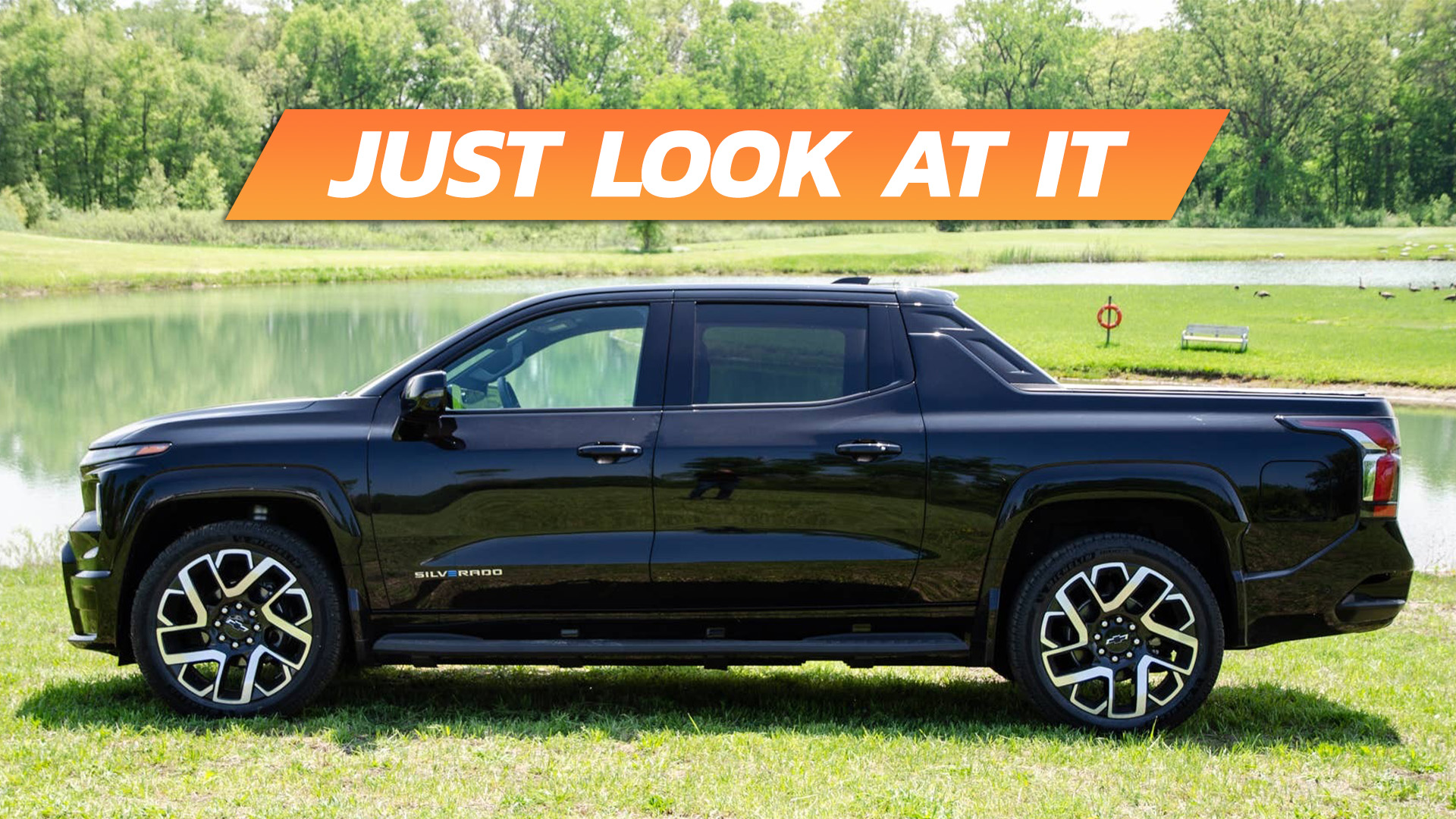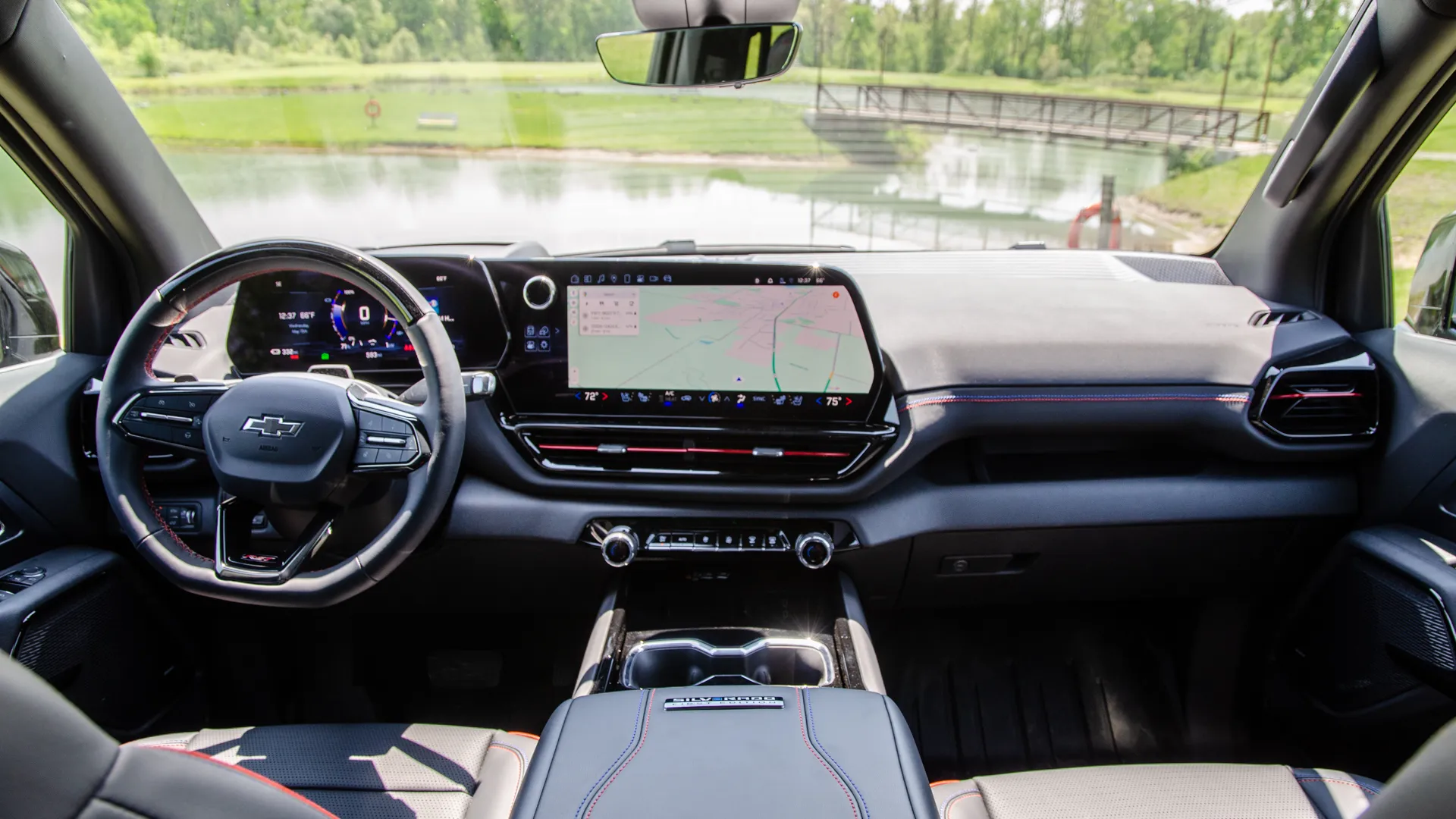
Nico DeMatti

Nico DeMatti
While you might not be able to find one on a road near you, I’ve had the opportunity to drive Chevy’s first-ever electric pickup—the Silverado EV—in both of its current configurations: the Work Truck and high-performance RST. When I drove the latter, a puzzling six-figure speed machine, I thought it lacked focus. It felt like Chevy was split between making a traditional pickup and a new-school electric truck. That got me thinking: This would have worked so much better as a new Avalanche.
I’ll explain.


I understand that changing its name doesn’t necessarily change the truck, but I’ll argue that it’s more important than you think. Any marketing major will tell you the same. Had Chevy planned on making its EV pickup an Avalanche from the beginning, it could have narrowed its focus and create a more purposeful truck with a clearer target audience. Customer expectations of an Avalanche are different than those of a Silverado, so Chevy could have stuck with a similar formula while targeting those buyers specifically.
The Chevy Avalanche was last on sale in 2013, so more than a decade ago now. It may not have seemed super significant at the time, but it was sort of a precursor to the lifestyle trucks we see so much of today. Riding on a ladder frame chassis, it shared more with the Tahoe than with the Silverado in terms of design, interior, and practicality. The Avalanche sported signature C-pillar sails and a short-ish five-foot bed, so it wasn’t the most utilitarian pickup; however, the mid-gate improved its practicality as long as you didn’t have rear passengers. Having said all that, let’s look at what the Silverado EV has: A short-ish bed that comes in just under six feet long, C-pillar sails, and a mid-gate. See where I’m going with this?



During Chevy’s presentation at the RST press launch, company reps repeatedly said that with the Silverado EV, they didn’t set out to make a great electric truck. Instead, they wanted to develop a great pickup that just so happens to be electric. The plan, then, was to create an all-new, from-the-ground-up chassis built on GM’s Ultium battery platform, rather than just stuffing batteries into a normal Silverado’s ladder frame like what Ford does with the F-150 Lightning. But it doesn’t make much sense to create an entirely new chassis, with a completely unique design, and then give it the name of an existing truck. It’s confusing for customers. Is it a Silverado or not?
This echoes what Silverado EV Chief Engineer Nichole Kraatz told MotorTrend when the truck was revealed in 2022:
“There are design cues that are reminiscent [of Avalanche]. We absolutely did not have Avalanche in mind when we were designing the truck. What drove the design of the truck was really the ground-up approach to the architecture. What were we going for? We were going for 400, or more, miles of range. We were going for design styling that looks more athletic, more sporty.”
Kraatz continued, “It’s not like we said let’s redo an Avalanche, it was never the conversation.”
Look, I get what Chevy was going for. The Silverado has long been a dependable and capable workhorse. The automaker wants to leverage that nameplate’s provenance for its first electric truck. And it is almost as capable as an ICE Silverado in the real world—even more so, in certain ways.
Obviously it’s quicker than the gas and diesel options, and thanks to the trick midgate, it’s capable of hauling longer objects without a trailer. It feels mostly like a traditional pickup, too, with its jouncy ride, vague steering, and utilitarian interior. However, its massive wheels and 9,000-pound-plus curb weight make that ride feel brittle and uncomfortable. Its interior is also fine for a pickup, with mostly hard plastics and a simple design, but it’s not as nice as it ought to be. Longtime truck customers are used to those features, but is that what anyone wants for $95,000?




It’s important to know who’s buying electric pickups that come close to the six-figure mark: Wealthy, tech-focused customers who at least want the appearance of an active lifestyle. Those customers probably don’t want the traditional truck experience, nor do they want a truck with a traditional name. Instead, they’ll spend their cash (or crypto, whatever) on a lifestyle vehicle like the Rivian R1T, with its stylish design, impressive cabin technology, and a better interior. The Rivian is also faster and available with a triple-motor setup for around the same price.
However, if Chevy positioned its electric pickup as an Avalanche, it could have marketed it as a rival to the Rivian or even the Tesla Cybertruck. Chevy could have shifted costs from making it somewhat familiar, like a traditional model, to making its interior nicer and suspension comfier. With a supple ride, luxurious cabin, snazzy cabin tech, and the Avalanche name, I really think its six-figure price tag would make more sense and appeal to the buyers in that space.
Is “Avalanche” the most beloved and exciting Chevy nameplate? No. The truck was only around for two generations and it’s been dead for years now. However, nostalgia is an easy sell and Chevy could have made a marketing hubbub about the model’s revival as a new electric truck. It would bring the type of excitement that’s missing from the Silverado EV’s complicated launch. And most importantly for the Bowtie brand, it would make them a lot easier to sell.
Got tips? Send ’em to tips@thedrive.com